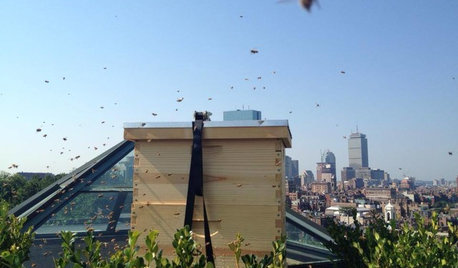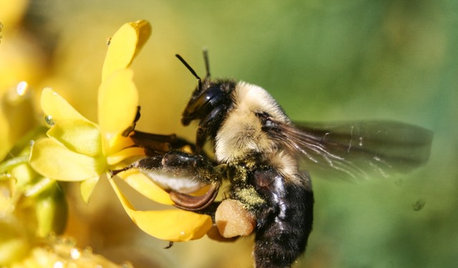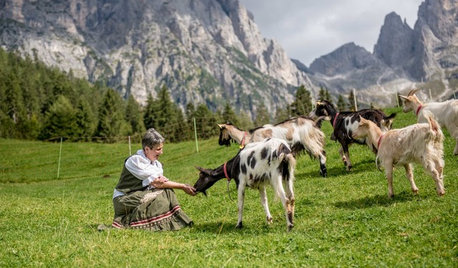Whole Foods To Label GMO Foods
John Liu
11 years ago
Featured Answer
Sort by:Oldest
Comments (33)
centralcacyclist
11 years agoRelated Discussions
GMO foods, labeling
Comments (7)I haven't studied oils enough to comment on that but the Wiki article on Canola oil is interesting. But I do know that if you buy anything in a package not specifically marked organic, it's almost certain to contain some type of GMO ingredients. If it was one type of food, one could make choices to avoid them if desired. I generated the list at the link above by using the widely published list of corporate conglomerates that gave money to fight prop 37 in CA earlier this month. They spent close to 50 million dollars just to fight this one proposal in one state election. I went to the website of each one to find the brands under each corporation. And I didn't list brands I was sure I've never heard of, it's not even a comprehensive list of brands owned by these conglomerates. But, the point is, this incomplete list includes almost all of the food in packages at any grocery store. I don't know if any of this stuff will be shown in time to be a mistake, but I believe people have the right to know what's in their food....See MoreNo Franken-salmon for Trader Joes, Whole Foods
Comments (6)First, let's give credit to them all, not just Trader Joe's. "Trader JoeâÂÂs; its sister company, Aldi; Whole Foods; regional chains Marsh Supermarkets (with stores in Indiana and Ohio) and PCC Natural Markets in Washington state; and co-ops in Minnesota, New York, California, and Kansas have signed on with the âÂÂCampaign for Genetically Engineered (GE)- Free Seafood.â ThatâÂÂs over 2,000 individual stores, and more are likely to join in." However, don't go clanging too many accolades. As said, companies are driven by profit, not "doing the right thing". These companies believe it's going to BENEFIT their bottom line and that's the ONLY reason they're doing it. If they can profit more from offering unbutchered 3-legged fryers, they will. So don't cheer too loudly or unconditionally. Cheer responsibly. And be aware of motivations. Remember the person in the van with the blacked out windows in front of the playgrounds aren't generally offering kids candy because it's a nice thing to do. Often there's other motivation....See MoreNew food labeling bill introduced...
Comments (25)I do know several small farmers who refuse to be certified as "organic" because they feel that is misleading as American standards allow the use of many . They will instead label their products as "pesticide free" or "produced in an organic manner" or something similar. They are always happy to tell anyone who asks about their growing methods. Most will employ biological controls, like predator insects, or mechanical devices like my "fake apples" brushed with a sticky substance that traps coddling moths. The bigger corporation farms will spray and dust more regularly, as they have the equipment to do so. Not all "natural pesticides" are harmless to humans, as once thought, and so things like rotenone, which is derived from plant sources like jicama vine has been found to kill fish and is "mildly" harmful to humans. Whatever that means, one would think it was harmful or not. However, if an item is labelled "organic", it will, at least at this point, be GMO free. Annie...See MoreRaw Foods/Whole Foods Kitchen? How did you plan around these needs?
Comments (6)This is my 3rd attempt at sauerkraut. First time was too scary, and I abandoned it. Second time around, I was more adventurous, and scraped the "spooge" off the edges and then tasted the 'kraut. It was SOUR, since I'd let it ferment for a long time (6 weeks or so), but good. Other people's sauerkraut tasted bland in comparison. I'm going to check this new batch at 5 days, and keep checking it every little bit after that til I find "just right". I know it takes me a while to get used to new favors, so hopefully the more you drink your lemonade, sample the cheese, etc., the more you'll like it. Have you tried store bought Kombucha? I'd love to get that kind of flavor and fizziness in our home brew. That's great you have space for a back pantry kitchen, Building for the CATS. I think this is an ideal setup, really. AK Tillery's kitchen comes to mind. Our pantry is only about 4x4ish, and has no room for a back counter. I'm thankful for what it holds, but its use is somewhat limited. The Amish around here often have a second kitchen in the basement. This is their canning area, and is nice for when they host large groups for church and fellowship. One friend used her second kitchen for juicing as part of Gerson therapy for her husband's Lyme disease (He's doing GREAT!) She was really thankful that all that prep and cleanup could happen separate from her everyday kitchen. Your rolling carts and extended counter sound super helpful, loonlakelaborcamp. I hear you on nowhere to clamp things down, we had issues with that in our old house when we'd go to use the squeezo or the apple peeler. I love the idea of the canning jars at the backsplash. I think Mamagoose has this too, right? I have my spices under my cooktop, which is pretty handy too. I just need to break down and order storage tins to contain them more neatly. It's a mess under there right now. I don't think I mind the "working kitchen look" so much as I mind A.The lack of counter space. B.When there is clutter on the counters, the kids don't clean up as well (and neither does mom, frankly ; )) It's like the stuff all blends together, and it gets more full and disorganized by the minute, like Scoby's left too long in their dark swampy tea. : )...See Moresally2_gw
11 years agolpinkmountain
11 years agocloudy_christine
11 years agolpinkmountain
11 years agoruthanna_gw
11 years agofoodonastump
11 years agoannie1992
11 years agoKatieC
11 years agoBumblebeez SC Zone 7
11 years agosally2_gw
11 years agotriciae
11 years agojomuir
11 years agoannie1992
11 years agocloudy_christine
11 years agocookie8
11 years ago2ajsmama
11 years agosally2_gw
11 years agomelissaki5
11 years ago2ajsmama
11 years ago2ajsmama
11 years agodoucanoe
11 years agoannie1992
11 years agomelissaki5
11 years ago2ajsmama
11 years ago2ajsmama
11 years ago2ajsmama
11 years agotriciae
11 years ago2ajsmama
11 years ago2ajsmama
11 years agoannie1992
11 years ago2ajsmama
11 years ago
Related Stories

FARM YOUR YARDHello, Honey: Beekeeping Anywhere for Fun, Food and Good Deeds
We need pollinators, and they increasingly need us too. Here, why and how to be a bee friend
Full Story
FRONT YARD IDEASWelcome Edibles Into the Front Yard for Fresh Food and More
Give your front yard design a boost and maybe even make new friends by growing fruits and vegetables
Full Story
EDIBLE GARDENSKeep Track of Your Vegetable Garden With Plant Markers
Bring order to your edible beds with these labeling ideas
Full Story
GARDENING FOR BUTTERFLIESGardening for the Bees, and Why It’s a Good Thing
When you discover how hard bees work for our food supply, you may never garden without them in mind again
Full Story
FUN HOUZZ10 Truly Irritating Things Your Partner Does in the Kitchen
Dirty dishes, food scraps in the sink — will the madness ever stop?
Full Story
HEALTHY HOME12 Ways to Set Up Your Kitchen for Healthy Eating
Making smart food choices is easier when your kitchen is part of your support team
Full Story
KITCHEN DESIGN11 Ways to Wake Up a Walk-in Pantry
Give everyday food storage some out-of-the-ordinary personality with charismatic color or other inspiring details
Full Story
FARMHOUSESWorld of Design: See How 9 Families Live and Farm on Their Land
Join us as we visit the homes and farms of passionate food producers and hear about rural life around the globe
Full Story
KITCHEN DESIGNA Designer Shares Her Kitchen-Remodel Wish List
As part of a whole-house renovation, she’s making her dream list of kitchen amenities. What are your must-have features?
Full Story
UNIVERSAL DESIGNMy Houzz: Universal Design Helps an 8-Year-Old Feel at Home
An innovative sensory room, wide doors and hallways, and other thoughtful design moves make this Canadian home work for the whole family
Full Story




CA Kate z9